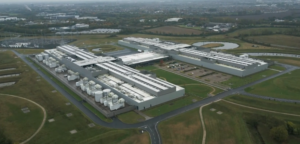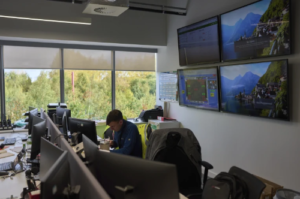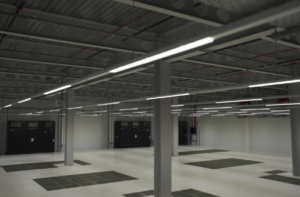Ireland’s aggressive embrace of data centers to fuel the artificial intelligence (AI) boom is now creating significant strain on the nation’s energy infrastructure. These data centers, critical for processing vast amounts of information, are consuming more electricity than all urban households combined. As a result, Ireland faces mounting pressure to balance economic growth with environmental sustainability, prompting government intervention and increasing public scrutiny.

Key Points:
Energy Consumption: Data centers accounted for 21% of Ireland’s electricity usage in 2023, surpassing residential energy consumption. This figure marks the highest reported burden by any country to the International Energy Agency.
Regulatory Action: In response to fears of potential rolling blackouts, Ireland’s grid operator imposed a moratorium on new data center construction near Dublin until 2028.
Climate Impact: Despite an increase in wind farms across the country, Ireland remains heavily dependent on fossil fuels to generate electricity. The expansion of data centers poses a challenge to the country’s climate goals, threatening efforts to reduce carbon emissions.
Local Opposition: Activists, community groups, and local governments are resisting new data center developments, citing rising electricity costs, environmental degradation, and insufficient local economic benefits.
Economic Appeal: Ireland continues to attract tech giants such as Amazon, Google, Meta, Microsoft, and TikTok due to favorable tax incentives, an English-speaking workforce, and its status as a European Union (EU) member.
Regional Shift: With data center expansion restricted in Dublin, developers are now exploring regions like Ireland’s Midlands, where wind energy and repurposed industrial sites provide new opportunities.
Future Outlook: The trajectory of data center growth in Ireland will depend on evolving government policies, public opinion, and the capacity to expand renewable energy infrastructure.

Dublin’s Data Center Limits:The capital’s proximity to transatlantic undersea cables and its temperate climate have made Dublin an attractive hub for data centers. However, as the number of facilities grew, their energy consumption surged, contributing to grid capacity constraints. In 2021, regulators announced that Dublin had reached its limit, preventing additional data centers from connecting to the power grid. Activists like Darragh Adelaide, a local councillor and member of the People Not Profits Party, have emerged as vocal opponents to further expansion, successfully blocking Google’s plans for additional facilities. Adelaide argues that while these centers consume vast amounts of energy, they offer limited local employment and negligible community benefits.
Midlands Development Opportunities:Counties such as Offaly are emerging as potential alternatives for future data center development. The region’s industrial history, coupled with available land and renewable energy projects, presents an opportunity for sustainable growth. Bord na Móna, a state-owned enterprise formerly focused on peat extraction, is now spearheading renewable energy projects, including wind and solar farms. By partnering with tech firms like Amazon, Bord na Móna seeks to position the Midlands as a key site for data center expansion while supporting Ireland’s green energy transition.

Renewable Energy Push:Renewable energy is central to mitigating the environmental impact of data centers. Companies like Statkraft, supported by long-term agreements with Microsoft, are investing in wind farms to power new data facilities. Nine wind turbines are currently under construction in Offaly, with plans for further expansion. These projects highlight how data centers can act as catalysts for renewable energy development, potentially accelerating Ireland’s shift away from fossil fuels.
Public Sentiment:The public’s reaction to data center expansion is mixed. While some residents express concern over environmental degradation, noise pollution, and cultural heritage threats, others see economic opportunities and infrastructure development. In areas like Offaly, where data centers could revitalize local economies, the prospect of job creation and increased investment is welcomed by some communities.
Conclusion:Ireland’s experience underscores the delicate balance between technological advancement and environmental responsibility. As demand for AI and cloud computing grows, countries worldwide may encounter similar challenges. Ireland’s response—including regulatory restrictions, renewable energy investments, and public engagement—offers valuable insights into managing the impact of data centers. Ultimately, the future of Ireland’s data center industry will depend on its ability to align growth with sustainability and equitable economic development.
